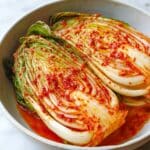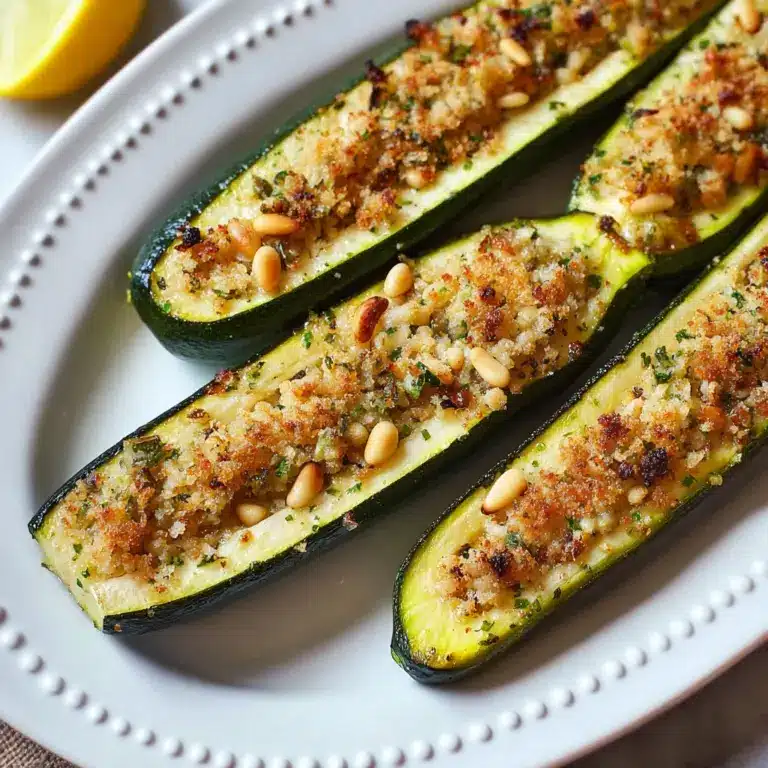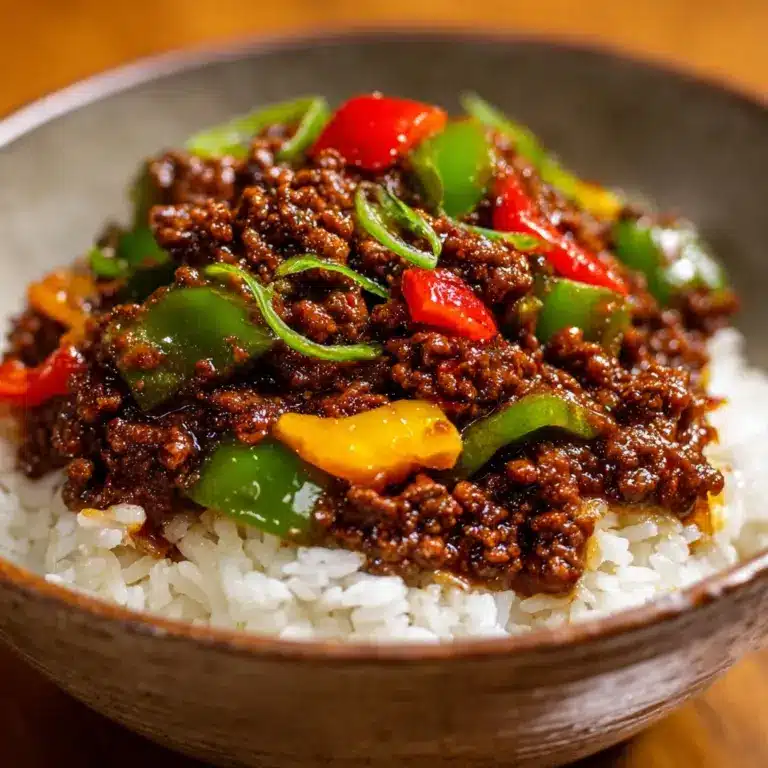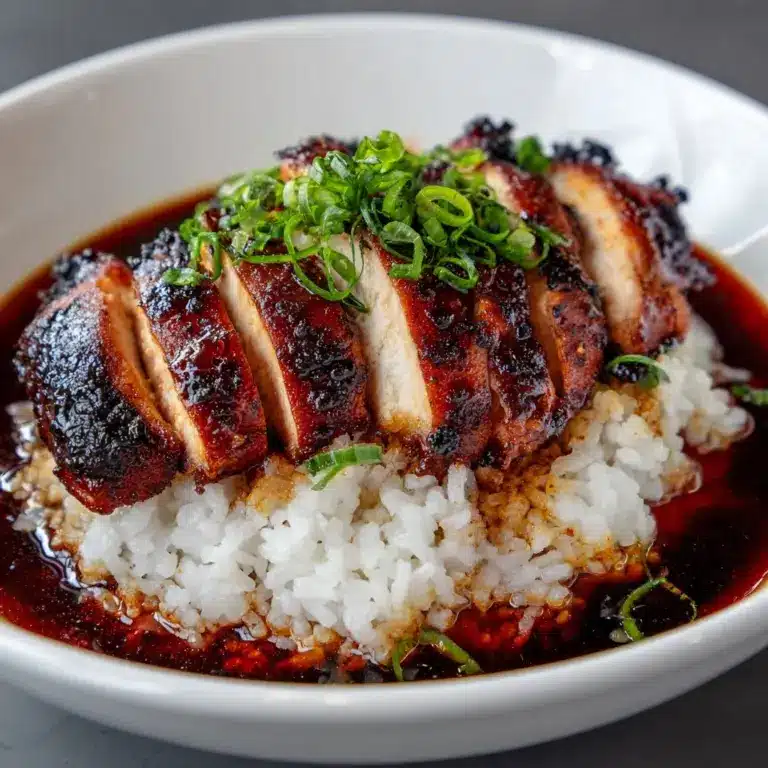Traditional Kimchi (Pogi Kimchi) Recipe
Introduction
Traditional kimchi, also known as Pogi Kimchi, is a staple Korean fermented dish featuring Napa cabbage and a spicy, flavorful seasoning. This classic recipe balances crisp vegetables with a rich umami-packed sauce, perfect for adding a vibrant touch to any meal.
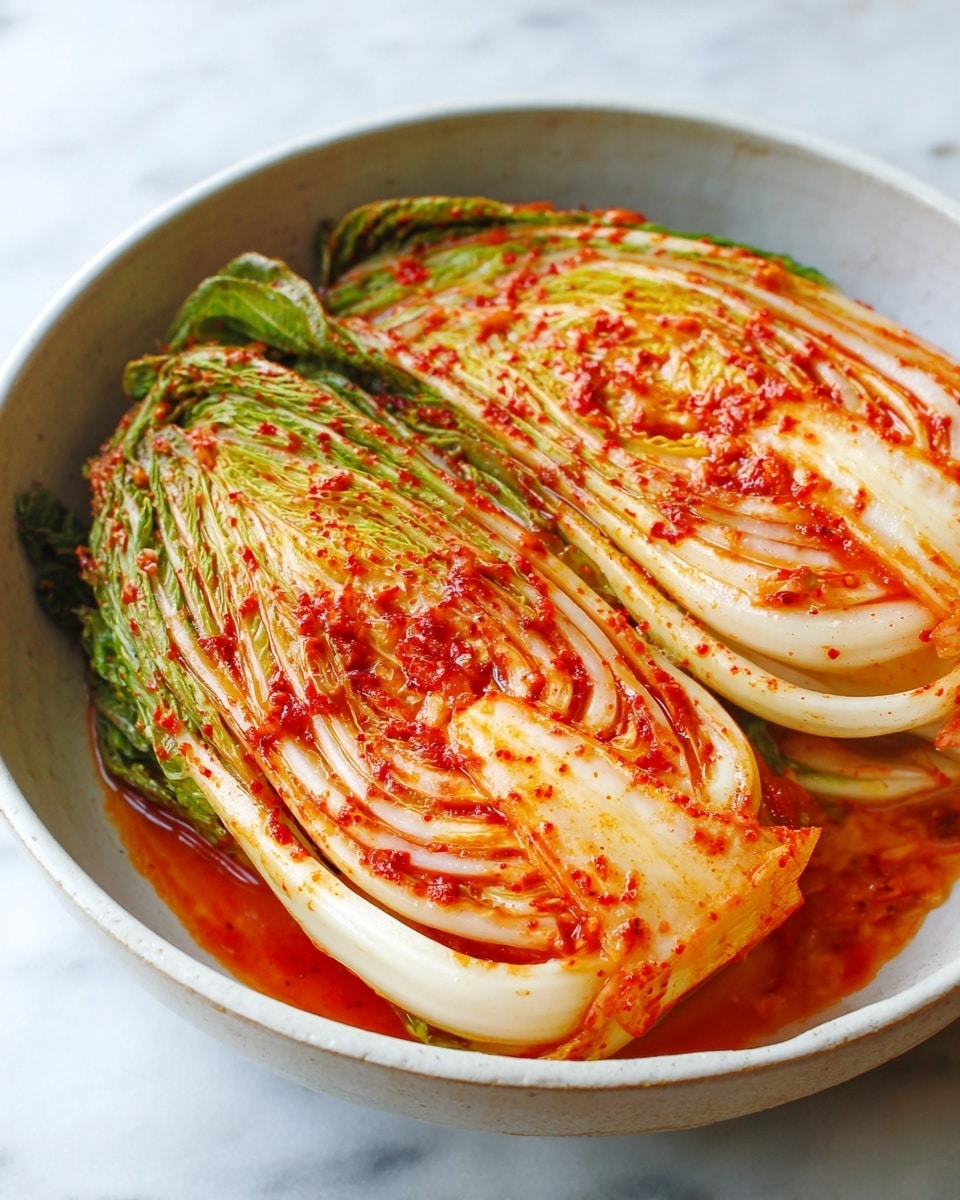
Ingredients
- 1 large Napa cabbage (baechu), about 5 to 6 pounds, or 2 small (about 3 pounds each)
- 1 cup Korean coarse sea salt (gulgeun soguem)
- 5 cups water
- 1 pound Korean radish (mu)
- 1/4 large Korean pear (optional)
- 3 – 4 scallions
- 1 piece dried kelp (dasima), 2 to 3 inch square (optional)
Seasonings:
- 1 tablespoon glutinous rice flour (chapssal garu)
- 1/2 cup gochugaru (Korean chili powder), adjust to taste
- 1/4 cup saeujeot (salted and fermented shrimp), roughly chopped
- 3 tablespoons myulchiaekjeot (fish sauce)
- 3 – 4 raw shrimps, about 2 ounces, finely minced or ground (optional)
- 3 tablespoons minced garlic
- 1 teaspoon grated ginger
- 1/2 cup water or dasima broth
Instructions
- Step 1: Cut the thick white part of the cabbage in half lengthwise, then gently pull apart each half to create quarters without cutting through the leaves entirely.
- Step 2: In a large bowl, dissolve 1/2 cup of salt in 5 cups of water. Immerse each cabbage quarter one at a time, shake off excess water, and transfer to another bowl.
- Step 3: Use the remaining 1/2 cup salt to generously sprinkle over the thick white parts of each leaf, similar to salting meat. Use as much salt as needed to cover all cabbage quarters well. Pour leftover salt water over the cabbage and let it sit for 6 to 8 hours, turning to rotate the cabbages every 2 to 3 hours.
- Step 4: When the white parts are bendable with slight resistance, rinse the cabbage thoroughly three times, especially between leaves. Drain well with cut side down.
- Step 5: (Optional) Make dasima broth by boiling the dried kelp piece in 1.5 cups water for 5 minutes, then cool. Mix rice flour with 1/2 cup water or broth and simmer over low heat until it thickens into a thin paste. Cool the paste.
- Step 6: Combine all seasoning ingredients including the rice paste and 1/2 cup water or dasima broth. Mix well and set aside until the gochugaru dissolves, forming a pasty texture.
- Step 7: Cut the radish and optional pear into matchsticks. Slice scallions diagonally into 1-inch pieces. In a large bowl, mix the radish, pear, and seasoning paste by hand, then add scallions and mix lightly. Taste; it should be slightly too salty to eat. Adjust seasoning if needed. Let it sit for 30 minutes.
- Step 8: Trim tough stems from each cabbage quarter, leaving enough to hold leaves together. Place one quarter in a bowl with the radish mix, spreading 1 to 2 tablespoons of filling between each leaf evenly. Divide filling into four parts, one for each quarter.
- Step 9: Fold leaves over the stem and wrap the cabbage with the outermost leaf. Place each wrapped quarter cut side up into a jar or airtight container. Use extra large leaves to cover the top if needed.
- Step 10: Press the kimchi firmly to remove air pockets. Rinse the seasoning bowl with 1/2 cup water or broth and add this liquid to the container. Close the lid tightly.
- Step 11: Leave the kimchi at room temperature for 1 to 2 days until it starts fermenting to your liking, then store in the refrigerator.
Tips & Variations
- Adjust the amount of gochugaru to control the spiciness of the kimchi based on your preference.
- Use dasima broth instead of water for a richer umami flavor in the seasoning paste.
- Try adding a bit more saeujeot or fish sauce if you like a stronger fermented shrimp flavor.
- Wear kitchen gloves when mixing the seasoning to protect your hands from chili irritation.
Storage
Store kimchi in an airtight container in the refrigerator after fermenting at room temperature for 1 to 2 days. It keeps well for several weeks and the flavor deepens with time. To reheat, kimchi is usually served cold or at room temperature, but you can warm it gently in dishes like stews.
How to Serve
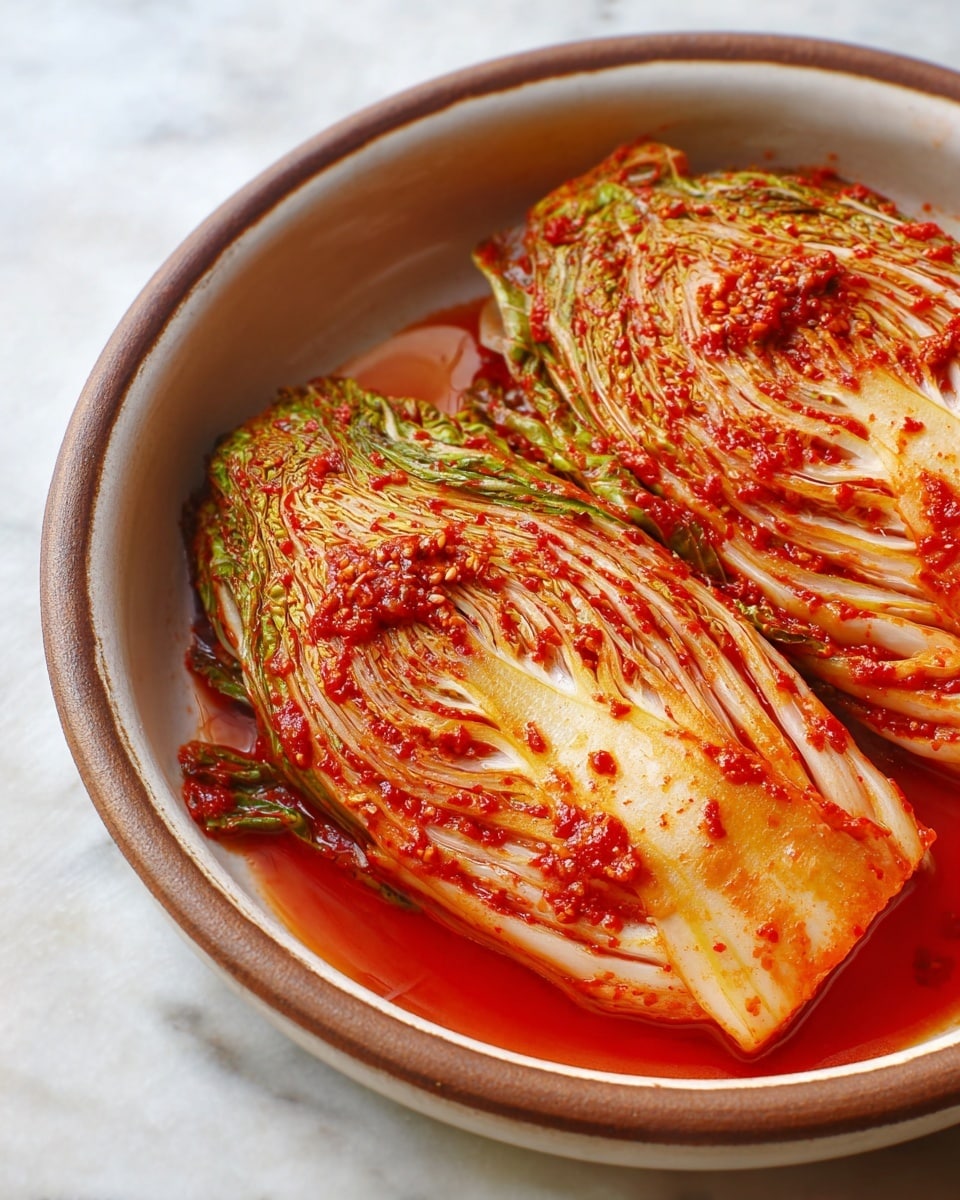
Serve this delicious recipe with your favorite sides.
FAQs
How long does kimchi take to ferment?
Kimchi typically ferments at room temperature for 1 to 2 days, depending on the temperature and your taste preference. After that, refrigerate it to slow fermentation.
Can I use regular cabbage instead of Napa cabbage?
Napa cabbage is traditional and ideal for kimchi due to its texture and flavor, but you can use regular cabbage if needed. The taste and texture will be slightly different, and the fermentation time may vary.
PrintTraditional Kimchi (Pogi Kimchi) Recipe
Traditional Korean Pogi Kimchi is a classic fermented cabbage dish that offers a perfect balance of spiciness, saltiness, and umami. This recipe involves salting the Napa cabbage, preparing a flavorful seasoning paste with gochugaru (Korean red chili flakes), fish sauce, garlic, ginger, and more, then stuffing and fermenting the cabbage quarters. The result is a crunchy, pungent kimchi that is a staple in Korean cuisine and excellent for digestion and health.
- Prep Time: 30 minutes plus 6 to 8 hours salting
- Cook Time: 15 minutes (to prepare rice paste and broth)
- Total Time: 7 to 8.5 hours plus 1 to 2 days fermentation
- Yield: About 1 gallon (3.8 liters) of kimchi, serves 8-10 1x
- Category: Fermented Vegetable
- Method: No-Cook
- Cuisine: Korean
- Diet: Gluten Free
Ingredients
Main Ingredients
- 1 large Napa cabbage (baechu), about 5 to 6 pounds, or 2 small (about 3 pounds each)
- 1 cup Korean coarse sea salt (gulgeun soguem)
- 5 cups water
- 1 pound Korean radish (mu)
- 1/4 large Korean pear (optional)
- 3 – 4 scallions
- 1 piece dasima (dried kelp), about 2 to 3 inch square (optional)
Seasonings
- 1 tablespoon glutinous rice flour (chapssal garu)
- 1/2 cup gochugaru (Korean red chili flakes), adjust to taste
- 1/4 cup saeujeot (salted and fermented shrimp), roughly chopped
- 3 tablespoons myulchiaekjeot (fish sauce)
- 3 – 4 raw shrimps, about 2 ounces, finely minced or ground (optional)
- 3 tablespoons minced garlic
- 1 teaspoon grated ginger
- 1/2 cup water or dasima broth
Kitchen Tools
- 2 large bowls or pots (7 – 8 quarts)
- Large colander
- Kitchen gloves
- 3/4 – 1 gallon airtight container or jar
Instructions
- Quarter the cabbage: Cut the thick white part of the Napa cabbage in half lengthwise, then slowly pull apart to separate into two pieces. Repeat for each half to make quarters, avoiding cutting through the cabbage leaves fully to keep them intact.
- Salt the cabbage: Dissolve 1/2 cup of Korean coarse sea salt in 5 cups of water in a large bowl. Thoroughly submerge each cabbage quarter in the saltwater, one at a time, shaking off excess and transferring to another bowl. Then, sprinkle the remaining 1/2 cup salt generously on the thick white parts of each leaf, similar to seasoning meat. Pour the remaining saltwater over the cabbage and let it sit for 6 to 8 hours, turning the cabbages every 2 to 3 hours to ensure even salting.
- Rinse and drain: When the white parts of the leaves become bendable but firm, rinse thoroughly three times to remove excess salt, especially between the leaves. Drain well with cut side down.
- Prepare dasima broth and rice paste: If using, boil a 2-3 inch square piece of dasima in 1.5 cups water for 5 minutes, then cool. Mix glutinous rice flour with 1/2 cup water or dasima broth and simmer over low heat, stirring occasionally, until it thickens into a thin paste. Cool the paste (about 3-4 tablespoons).
- Make the seasoning mixture: Combine the rice paste, gochugaru, saeujeot, fish sauce, minced shrimps (if using), minced garlic, grated ginger, and 1/2 cup water or dasima broth in a bowl. Mix well until the chili flakes dissolve and the mixture becomes pasty.
- Prepare vegetables: Cut Korean radish and optional pear into matchsticks. Cut scallions diagonally into 1 inch segments. Combine the radish (and pear if used) with the seasoning mix and mix well by hand. Add the scallions and mix lightly. Taste to ensure the mixture is slightly too salty, adjusting salt or fish sauce as needed. Let it sit for about 30 minutes to meld flavors.
- Stuff the cabbage: Trim the tough stem from each cabbage quarter, leaving enough to hold leaves together. Take one cabbage quarter and spread the radish seasoning mix on each leaf, using about one-quarter of the mixture per cabbage. Fold the leaf over toward the stem and wrap it with the outermost leaf to hold the filling in place.
- Pack into container: Place each stuffed cabbage quarter, cut side up, into a large airtight container or jar. If you have loose large leaves, use them to cover the top of the packed kimchi. Press down firmly to remove air pockets. Rinse bowl with 1/2 cup water or dasima broth and pour inside the container for extra seasoning. Close the lid tightly.
- Fermentation: Leave the kimchi at room temperature for 1 to 2 full days to allow fermentation. Duration can be adjusted depending on desired ripeness and weather. After, store kimchi in the refrigerator to slow fermentation and preserve flavor.
Notes
- If you have large loose cabbage leaves left, use them to cover the top of the kimchi in the jar to prevent oxidation.
- Fermentation time at room temperature varies by season and temperature; shorter time yields fresher kimchi, longer time develops deeper sourness.
- Wearing kitchen gloves when mixing the seasoning prevents skin irritation from chili peppers.
- Using dasima broth is optional but adds umami depth to the kimchi paste.
- Adjust the amount of gochugaru according to preferred spiciness.
Keywords: Kimchi, Traditional kimchi, Pogi kimchi, Korean fermented cabbage, fermented vegetables, spicy kimchi, Korean recipe

